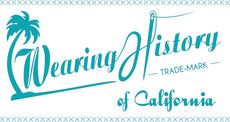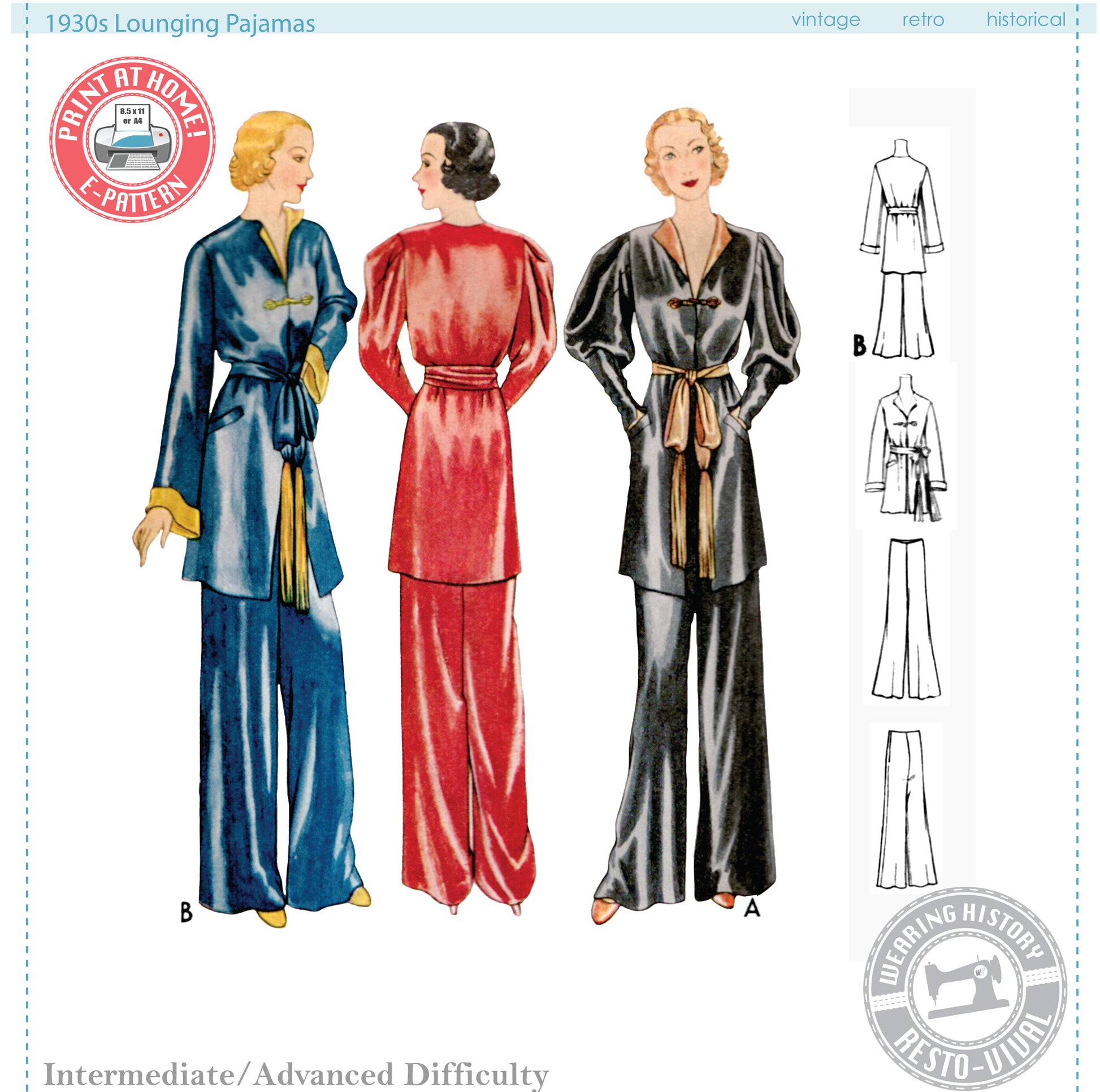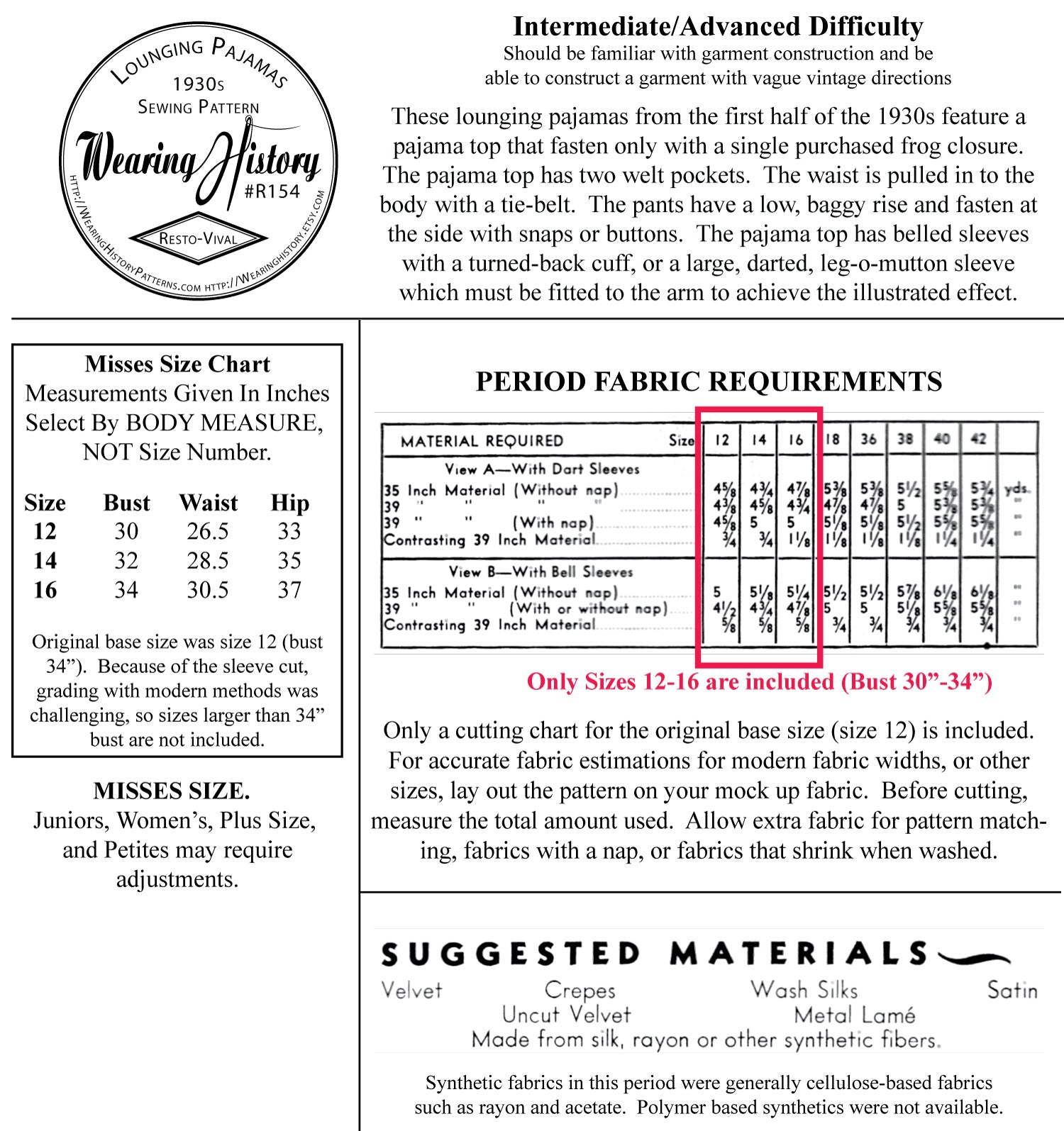Wearing History
E-PATTERN- 1930s Lounging Pajamas- Bust 30-34"
Couldn't load pickup availability
Sizes 30" bust to 34" bust ONLY at this time. All three sizes in the same packet.
E-PATTERN- download and print at home on US Letter or A4 size paper. This uses A LOT of paper. Also includes 36" wide format and A0 paper sizes.
1930s Pajama Pattern
These lounging pajamas from the first half of the 1930s feature a pajama top that fasten only with a single purchased frog closure. The pajama top has two welt pockets. The waist is pulled in to the body with a tie-belt. The pants have a low, baggy rise and fasten at the side with snaps or buttons. The pajama top has belled sleeves with a turned-back cuff, or a large, darted, leg-o-mutton sleeve which must be fitted to the arm to achieve the illustrated effect.
Many thanks to Virginia Lane, who generously made this pattern possible by sharing from her amazing collection of antique patterns.
SIZES
This pattern has been multi-sized to included sizes 30"-34" bust ONLY. Please enlarge second image for size chart, bordered by red.
This pattern was based on a size 30" bust pattern, and includes the two additional sizes.
I did attempt to resize this pattern with modern grading methods, but unfortunately, I was not successful. Others may have better luck resizing themselves to their own body, but instructions for enlarging *ARE NOT* included.
- DIFFICULTY -
Intermediate to advanced difficulty. Instructions are original to the time period and are very minimal compared with today. There are only a couple of illustrations, and "sewing details" with minimal instructions for welt pockets and side fastenings. You may wish to have a sewing book handy or reference online Youtube videos for techniques you are unfamiliar with.
- Yardage Requirements-
Please see images. The cutting chart is only for the base size of 30" bust. Try out your cutting layout when laying the pattern on your mock up fabric. Before cutting, measure the total amount of fabric used and use this amount for purchasing your final fabric. Allow extra fabric for matching patterns, fabrics with a nap, or directional prints.
-Additional Notes-
Because this was based on a period original, a mock up is HIGHLY SUGGESTED. Test construction and fit on your unique figure before cutting into your fashion fabric. This pattern was based on an antique original and has not been tested for fit or construction.
--HOW TO PRINT AND USE THIS E-PATTERN--
YOU WILL NEED ADOBE READER, A FREE PDF READER PROGRAM, IN ORDER TO OPEN AND PRINT THIS PATTERN.
This pattern is formatted for USA Letter Size and A4 sized paper. You will need to print this pattern to 100% scale. Open the "READ-ME-FIRST" File for instructions on printing and piecing your pattern.
This pattern is tiled into letter sized paper. This pattern file is formatted to fit on both sizes of paper, and there will be varying thicknesses of white border, which will be cut off, according to pattern instructions.
You will print these documents on your home printer, cut, and tape them together, to form a larger pattern layout. Then you cut and use your pattern just as you would a normal home sewing pattern.
This pattern comes in a ZIP folder that must be decompressed to use, and uses a LOT of paper.
About Wearing History Resto-Vival™ Patterns
Resto-Vival™ Patterns are original historic patterns that have been restored and revived. Original patterns are usually available only in single sizes, precut from tissue paper and totally unprinted, with details like grainlines and darts indicated only by small perforations. Resto-Vival™ patterns are printed on sturdy bond paper instead of tissue and clearly marked with drawn and labeled markings. These markings aid the modern sewer in understanding the markings of the original pattern and the construction of the garment. Resto-Vival™ patterns follow the period shapes of the original patterns, maintaining the historical accuracy of the completed garment. Original period instructions are included. These instructions are text only (unless otherwise noted) and fairly minimal, especially compared to instructions for modern patterns. At least an intermediate knowledge of dressmaking and a good familiarity with pattern construction is suggested. You may choose to have a modern or period sewing book handy to help with basic construction methods that the pattern instructions do not cover in detail. Also, fitting a muslin mockup is strongly recommended, as all garments were meant to be worn over period foundation garments or corsetry.
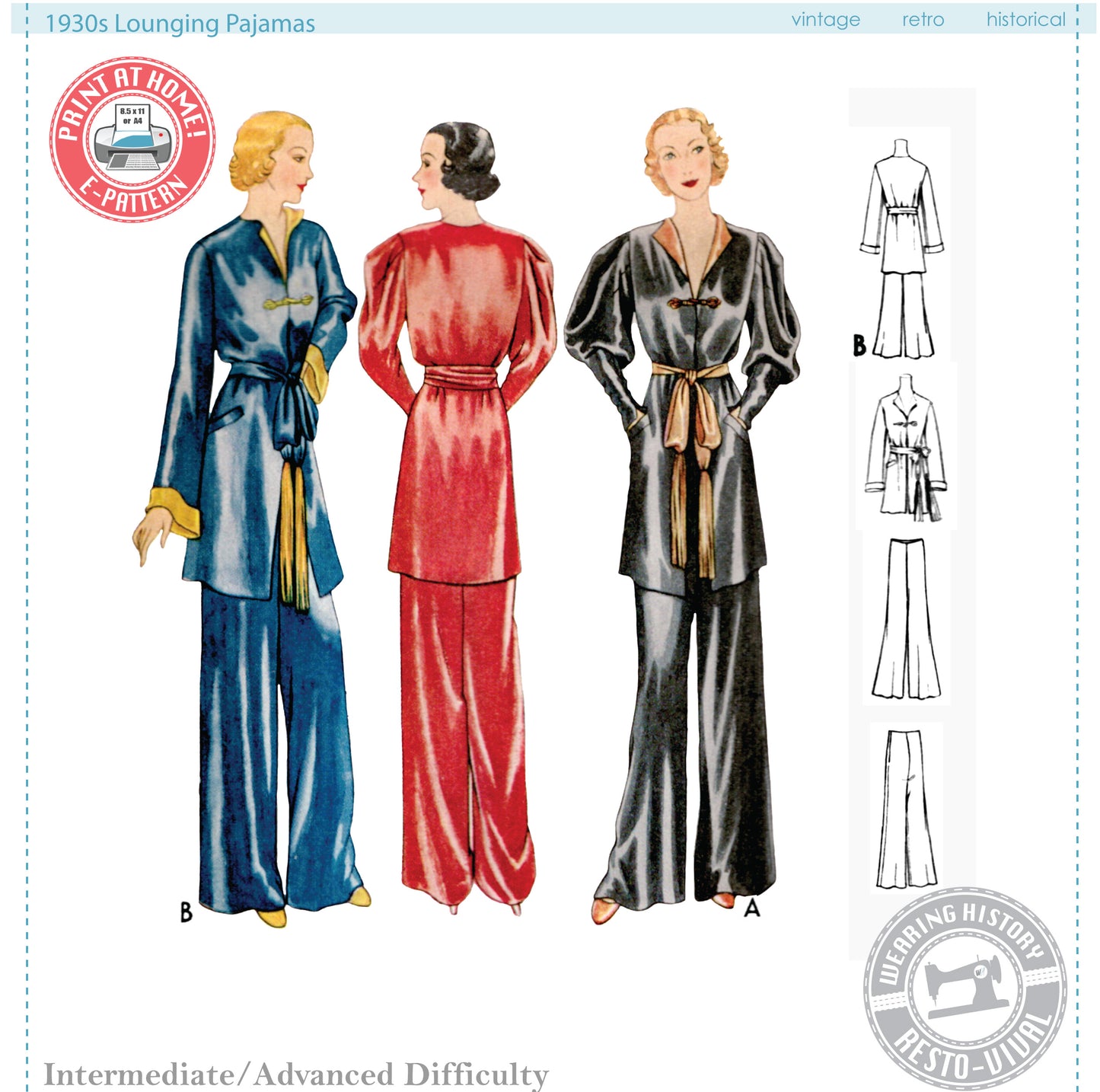
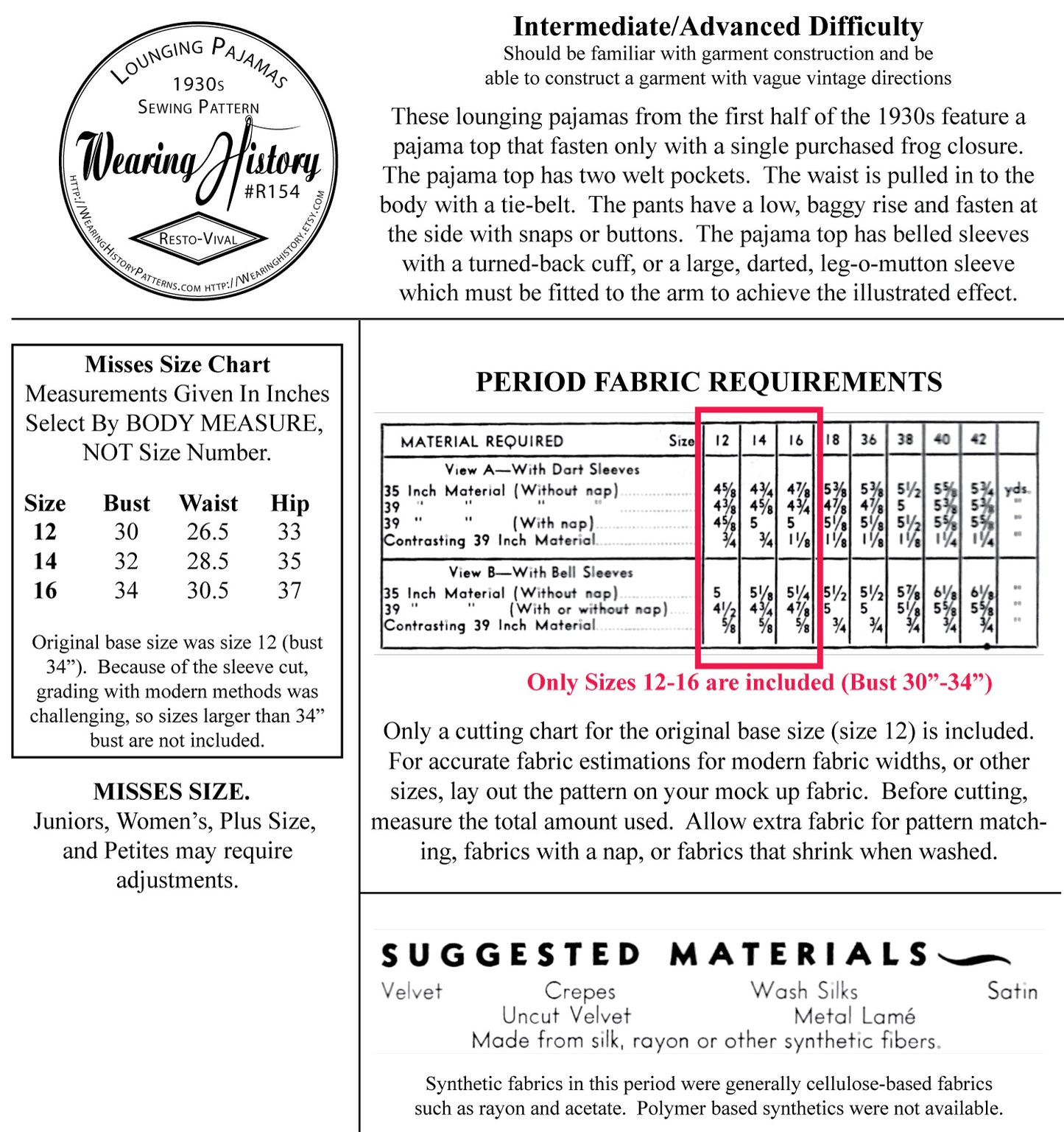
-
Shipping
PRINTED PATTERNS are mailed to you and already printed on big paper. Shipping is calculated at checkout. Please allow up to one week for orders to ship.
E-PATTERNS and E-BOOKS are digital download PDF files you save and print yourself or have printed for you. These will not mail to you. You download them yourself to your computer after checkout.
We do not sell to the EU or the UK on this site, as we aren’t set up for VAT collection. Please shop on Etsy if you’re in those countries. Http://wearinghistory.Etsy.com
-
HOW TO USE E-PATTERNS
Most patterns come as both A4/US LETTER and A0 size. You will need ADOBE READER, a free program, to print your e-pattern.
For A4/US LETTER paper:
Open the "READ-ME-FIRST" File for instructions on printing and piecing your pattern. Print the PDF file on your home printer, cut off on the lines given, and tape them together. Then you cut and use your pattern just as you would a normal home sewing pattern.
For A0 size:
This is sent away to a copyshop and printed on big sheets for you. We print A0 pattern sheets at great prices at Pattern Printing Company
-
Returns
No returns or exchanges are accepted. Please be sure of your pattern size and type of product, either physical or digital, before purchasing.
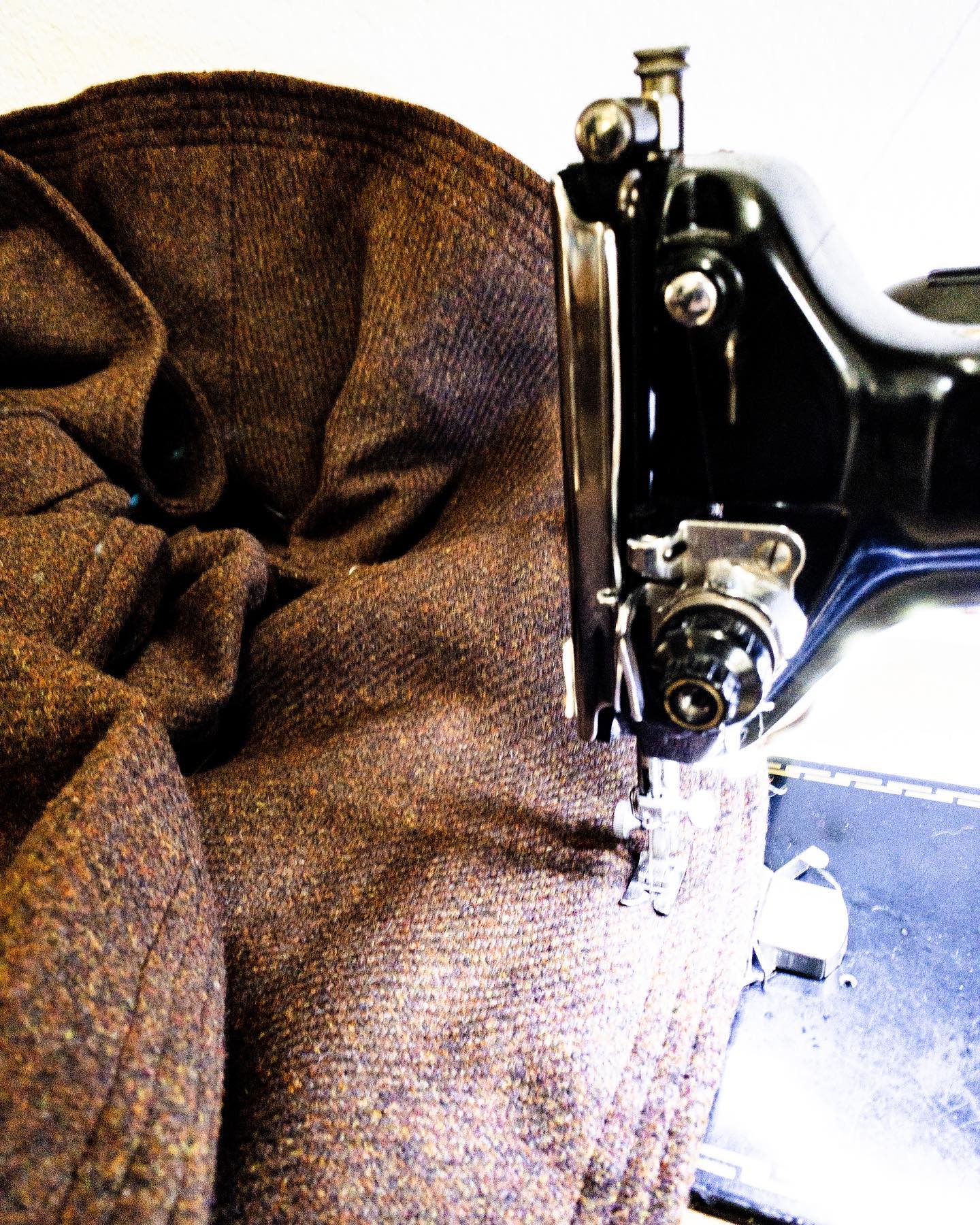
Carefully Researched
All of our patterns are carefully researched and based on either public domain materials or our own creations. Lauren applies her decades worth of practical application of historical fashion and technical skills when making these patterns, and often supplies watch points for making. External helps are available on Wearing History on YouTube and on Wearing History Blog to help you learn to sew history.
